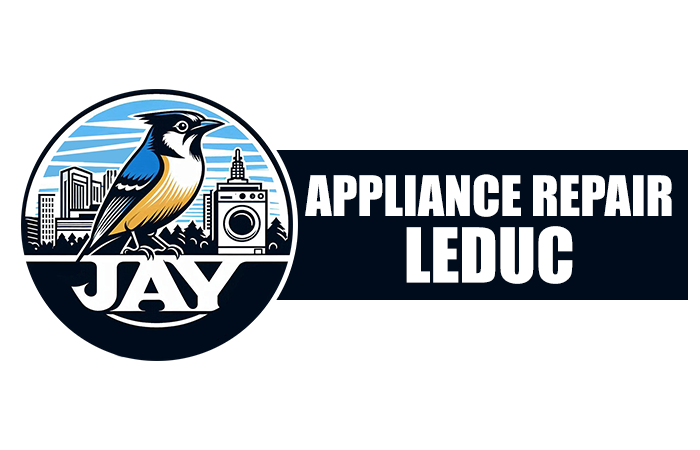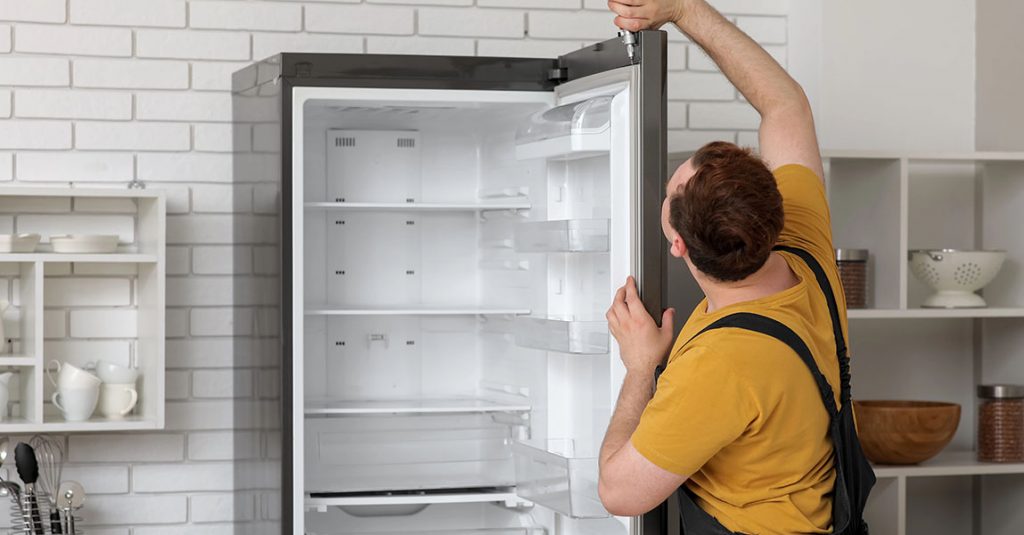One of the most confusing problems homeowners face with refrigerators is when the freezer works perfectly, but the fridge compartment stays warm. To clarify, this isn’t a full-system failure; it’s a cooling distribution issue. Therefore, the problem likely lies in airflow, not refrigerant loss.
This is where the evaporator fan becomes essential. In other words, the fan is responsible for pushing cold air from the freezer into the fridge section. Without it, the fridge can’t maintain its required temperature, even though the freezer seems fine. Consequently, many people end up discarding food from the fridge while the freezer stays fully operational.
Why the Evaporator Fan Matters So Much
The evaporator fan is usually located behind the back panel inside the freezer. Most importantly, its job is to circulate cold air through vents into the refrigerator compartment. If it fails, air remains trapped in the freezer, and your fridge slowly becomes a lukewarm box.
Firstly, it’s critical to determine whether the fan is running. You can usually hear it once the freezer door closes, since the fan is triggered by a door switch. Secondly, if the fan is not spinning or sounds irregular, this is your top suspect. Moreover, fan failure can occur due to motor wear, ice build-up, or even electrical disconnection.
Symptoms Pointing to a Faulty Evaporator Fan
We often hear customers describe similar symptoms before realizing the fan is the cause. For instance, the top shelf of the fridge stays warm, but vegetables at the bottom still seem slightly cool. Likewise, milk or meat spoils days before the expiry date, even though the freezer still makes solid ice.
Above all, airflow inconsistency is your biggest clue. In addition, you might notice the fan makes a grinding or clicking sound before failing completely. If you unplug your fridge and remove the freezer panel, a stuck fan blade or icy obstruction could be clearly visible.
Common Causes Behind the Fan Stopping
There are a few common reasons the evaporator fan stops working. Firstly, the fan motor may simply burn out over time due to age or continuous operation. Secondly, a common issue we see is excessive frost or ice building up around the blades, which locks them in place.
Further, this ice buildup is usually the result of a defrost system problem. That is to say, your defrost heater, thermostat, or control board could be failing, causing moisture to accumulate and freeze around the fan area. In some cases, the issue stems from a faulty fan relay or broken door switch.
Performing a Safe Visual Inspection
We always start by unplugging the refrigerator for safety. Meanwhile, we remove the panel covering the evaporator coils in the freezer section. If there’s a large block of ice around the fan, that confirms an airflow blockage. After that, we test the fan manually by spinning the blades to check for resistance.
Most importantly, we avoid forcing the fan. In other words, if it doesn’t move freely, it’s better to let it thaw or replace it altogether. If the fan spins well, then the issue might be electrical. In that case, we proceed to test the fan motor’s continuity using a multimeter to determine if it still has a proper electrical path.
When to Test the Defrost System
If ice build-up is recurring, your defrost system needs further inspection. Therefore, we test the defrost heater with a multimeter and check the defrost thermostat for continuity as well. Secondly, we review the control board to make sure it’s sending signals correctly.
In addition, the defrost timer might be stuck, keeping your refrigerator from defrosting on schedule. To clarify, this allows ice to accumulate gradually until the fan becomes blocked again. JAY Appliance Repair has encountered dozens of these cases in Leduc homes, and each one showed similar patterns.
How to Replace a Faulty Evaporator Fan
If your evaporator fan motor has failed and cannot be repaired, it needs replacement. We start by ordering the right fan compatible with your refrigerator model. After unplugging the appliance and removing the freezer shelves and panels, we unscrew the fan bracket and disconnect the wires.
Subsequently, we install the new fan and secure the wiring firmly. Once reassembled, we allow the unit to run for a few minutes and check whether cold air reaches the fridge compartment again. In most situations, restoring airflow through a new fan restores normal cooling within hours.
Noticing Other Signs? It May Not Be Just the Fan
Sometimes, customers report frost on the back wall of the freezer or hear strange humming. In such cases, there could be a broader issue with the defrost heater or control board. Likewise, if the refrigerator temperature sensor is faulty, it might not tell the system when to run the fan.
In addition, poor airflow might result from clogged air ducts or broken dampers. Therefore, it’s important to do a full system check rather than relying solely on the fan as the root cause. Our team has addressed cases where the damper control assembly was stuck shut, even though the fan was perfectly fine.
Electrical Testing Steps You Can Try
If you’re comfortable using a multimeter, unplug the fridge and access the evaporator fan motor wires. After that, test for continuity between the terminals. If there’s no continuity, the motor windings have failed. Similarly, we test voltage from the control board to confirm that power is reaching the motor.
However, if you find power present but the fan still doesn’t run, the motor is definitely faulty. Conversely, if there’s no power coming from the board, the issue may lie deeper in the electronic control system. We recommend caution here, as control boards are expensive and easily misdiagnosed.
Preventative Measures to Avoid Future Issues
Once a repair is made, we always advise customers to check their door seals and keep vents clear. Most importantly, airflow needs space, so overpacking either the freezer or fridge can cause future blockages. Likewise, we suggest keeping an eye on frost patterns and checking for moisture accumulation.
Further, regular coil cleaning behind or under the fridge can extend the fan’s life. Dust can build up on components and restrict ventilation, leading to system overheating or inefficient cooling cycles. To avoid these issues, we make preventative maintenance part of every fridge repair we complete.
A Real Example from Our Team
Recently, one of our technicians handled a case where the customer noticed their drinks stayed warm, but the freezer kept everything rock solid. At first glance, nothing seemed broken. However, after inspecting the freezer panel, our team found the evaporator fan completely iced in.
After defrosting and testing the motor, we confirmed it had failed due to prolonged strain. We replaced the fan, confirmed air was flowing back into the fridge section, and restored normal temperatures. This is one of many cases where the evaporator fan turned out to be the overlooked culprit.
When to Bring in a Professional
It’s always tempting to try repairs yourself, especially with so many tutorials available. However, refrigerator internals are complex and sensitive. If you’re unsure, it’s safer to contact a professional to diagnose the full cooling system.
Our team handles these inspections thoroughly. That is to say, we don’t just swap out parts—we verify the root cause and check related systems. Therefore, when your fridge is warm but the freezer is cold, we can confidently determine whether the evaporator fan, defrost components, or something else is the real issue.
To understand more about how fridge repair services in Leduc are handled professionally, we keep all our inspections comprehensive and component-focused.
Clear Airflow Paths Keep the Whole System Running
In conclusion, your evaporator fan isn’t just a small component—it’s a major player in maintaining proper fridge temperatures. If your fridge warms up while your freezer stays cold, don’t overlook the evaporator fan motor. It may seem minor, but the results of failure can be costly.
For homeowners experiencing this issue in Leduc, our team encourages prompt action. Most importantly, don’t ignore symptoms like unusual noises, inconsistent cooling, or ice around the vents. When airflow breaks down, food safety and energy efficiency both take a hit.
If you’re facing similar problems, contact our refrigerator technicians in Leduc to get it looked at professionally.
We inspect thoroughly, test everything with precision, and make sure your appliance functions the way it should. JAY Appliance Repair handles this issue regularly, and we’re ready to help when you need us.
FAQs
What does the evaporator fan actually do in a refrigerator?
The evaporator fan circulates cold air from the freezer into the fridge compartment. It ensures that both areas receive consistent cooling by pushing air over the evaporator coils and through ventilation ducts.
Why is my fridge warm but my freezer is still cold?
This usually means cold air is not reaching the refrigerator compartment. The most common reason is a failed evaporator fan motor, which prevents airflow between the two sections.
Can I replace the evaporator fan myself?
Yes, if you’re comfortable handling electrical components and can safely access the freezer panel. However, diagnosis should be done properly first, as the issue might be related to defrost controls or airflow blockages.
What if the evaporator fan works but there’s still no airflow?
If the fan is spinning but no air reaches the fridge, check for a blocked air duct or a malfunctioning damper. Ice accumulation or stuck vent doors can also prevent proper air circulation.
How can I tell if the fan motor is burned out?
You can test the motor using a multimeter to check for continuity. If there’s no continuity, or if the fan hums but doesn’t spin, the motor is likely defective and needs replacement.

